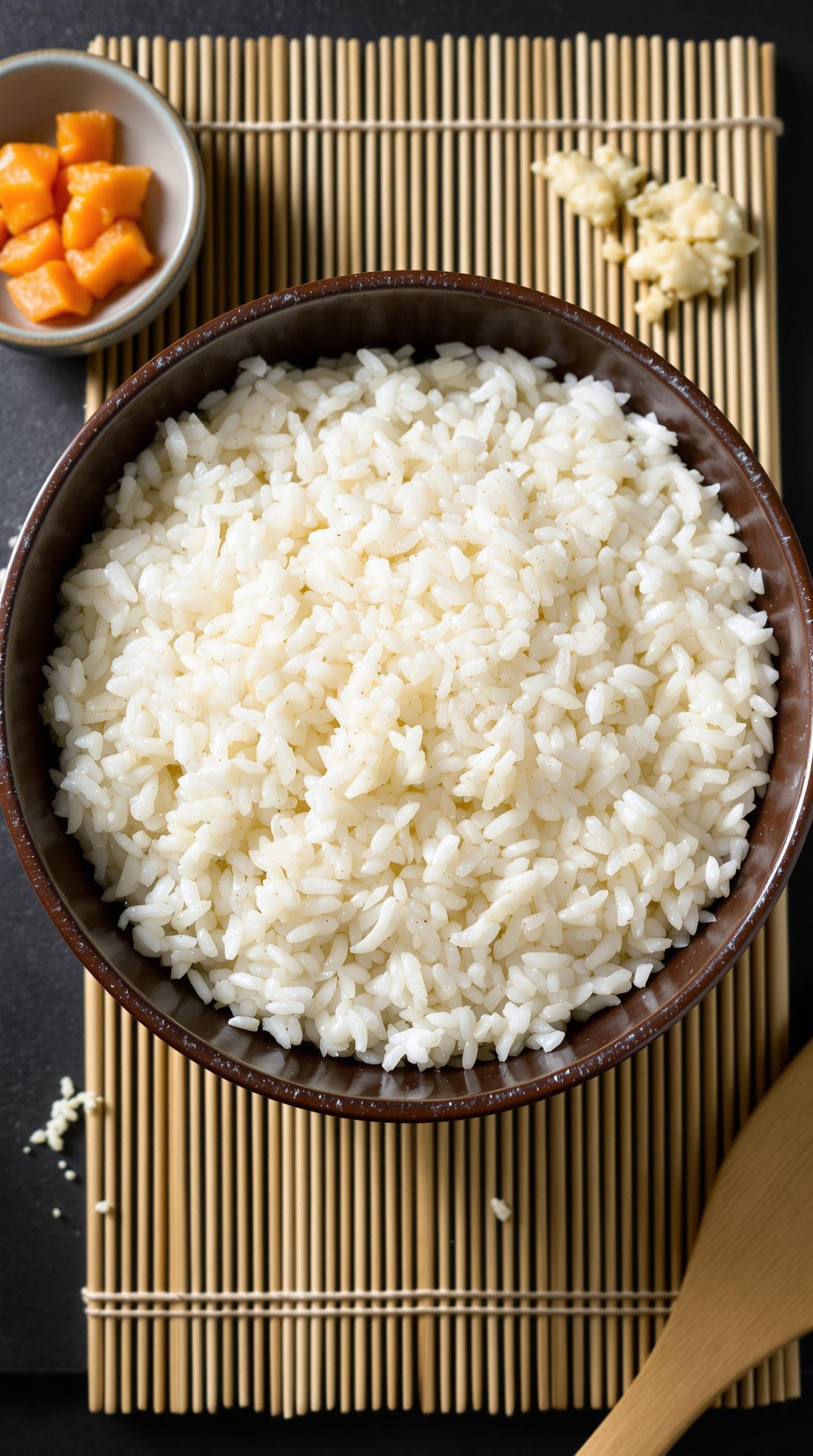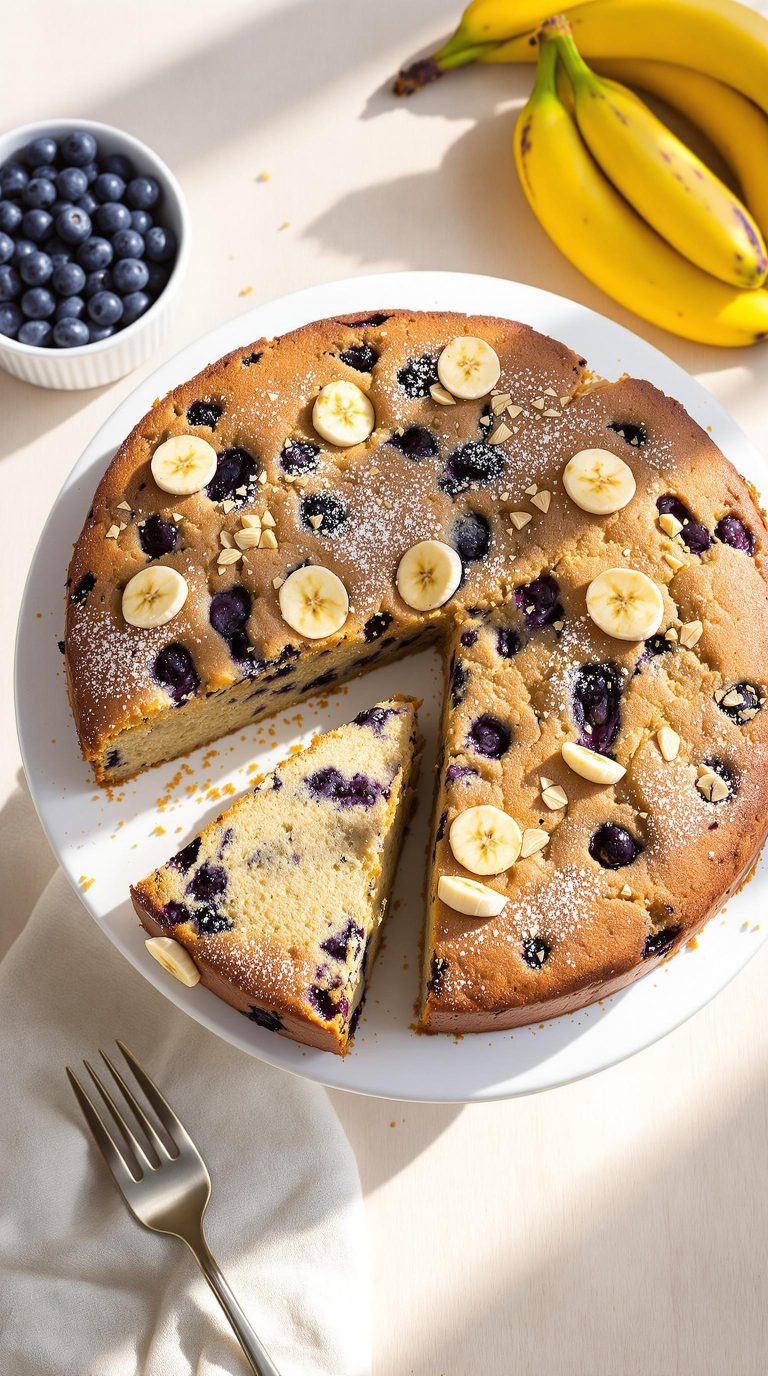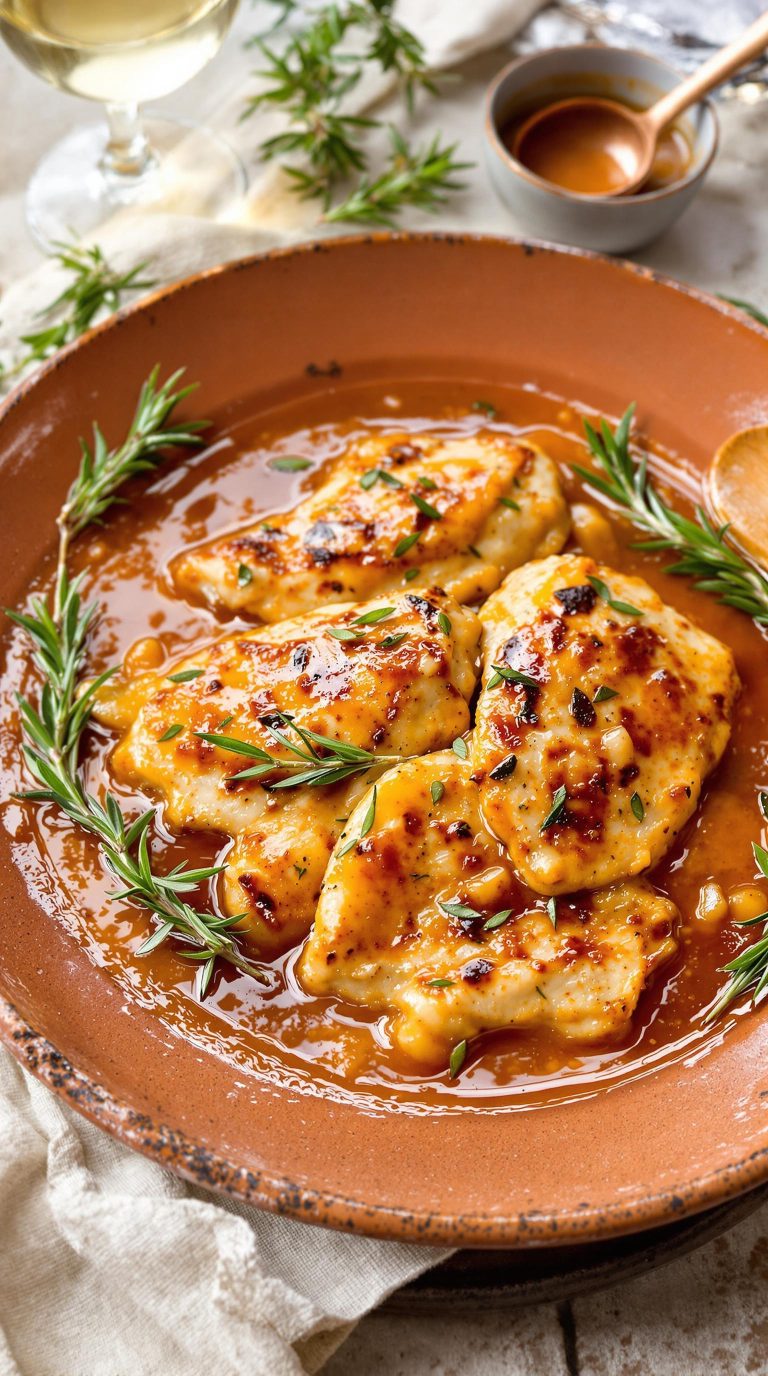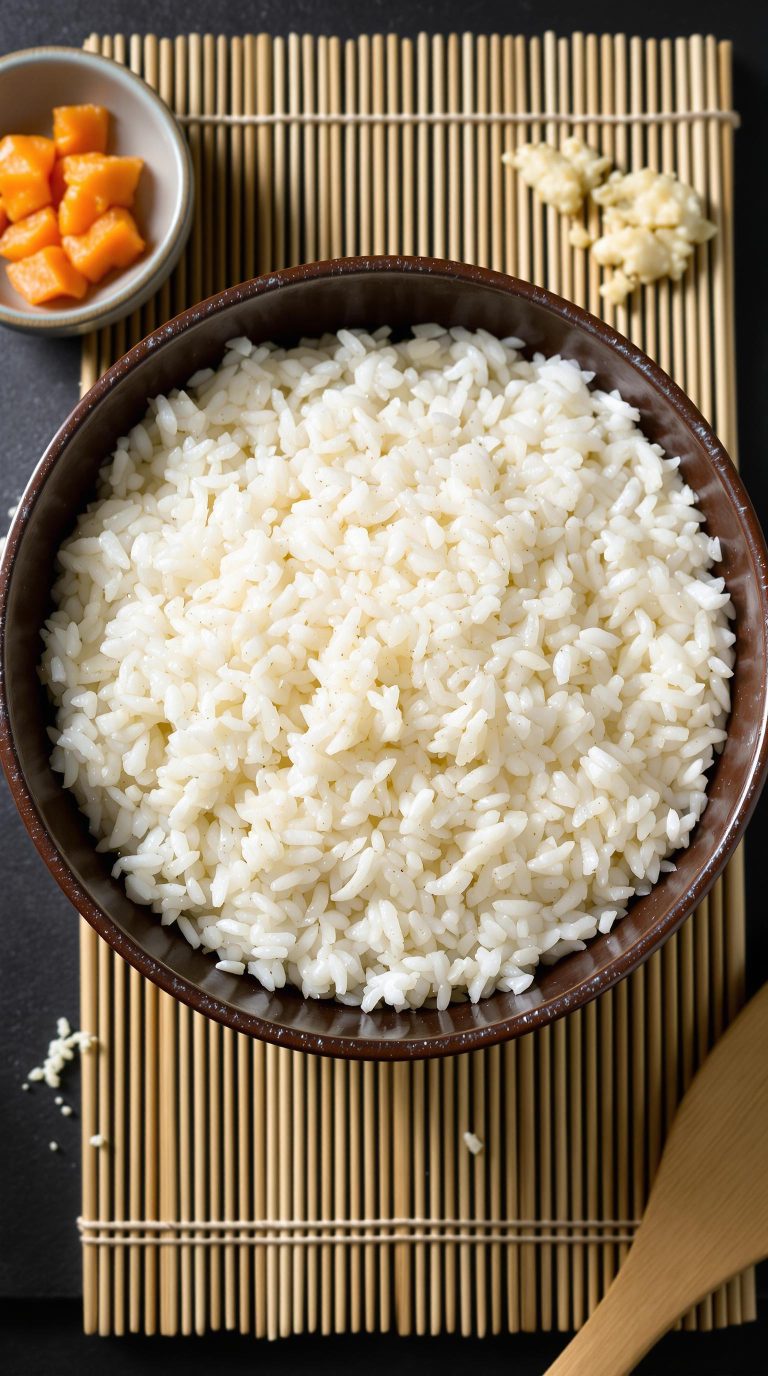Why You’ll Love this Perfect Sushi Rice
Three reasons you’ll going to fall head over heels for this sushi rice recipe.
First, it’s absolutely foolproof—even if you’ve never made sushi before, you’ll nail this perfectly sticky, glossy rice on your first try.
Second, that mitzukan seasoning creates the most authentic flavor profile, balancing sweet, salty, and tangy notes that make store-bought sushi pale in comparison.
Third, this recipe gives you that restaurant-quality texture—each grain distinct yet clingy enough to hold your rolls together.
The rinsing technique, though a bit time-consuming, removes excess starch for rice that’s never gummy.
Who needs takeout with this in your arsenal?
What Ingredients are in Perfect Sushi Rice?
Making authentic sushi rice at home is surprisingly straightforward, and it all starts with just a handful of key ingredients. The magic of sushi rice comes from the perfect balance of short or medium-grain rice (which gives that essential sticky texture) combined with a seasoned vinegar mixture that transforms plain rice into something truly special.
The right ingredients make all the difference between mediocre homemade sushi and restaurant-quality results that will have everyone asking for your secret.
- 3 cups medium-grain rice (1 cup = 180 ml) or 3 cups short-grain rice (1 cup = 180 ml)
- 3 ounces mitzukan sushi rice seasoning
- Water for cooking and rinsing
When shopping for your rice, don’t try to substitute long-grain varieties like jasmine or basmati—they simply won’t provide the right texture.
The mitzukan seasoning is a time-saver that contains the perfect blend of rice vinegar, sugar, and salt already mixed in ideal proportions. If you can’t find this specific seasoning, many Asian markets carry alternatives, or you could make your own with rice vinegar, sugar, and salt (though the pre-made mix really delivers consistent results).
And while it might seem trivial, the quality of your water matters too—if your tap water has a strong taste, consider using filtered water for the best flavor profile in your finished sushi rice.
How to Make this Perfect Sushi Rice
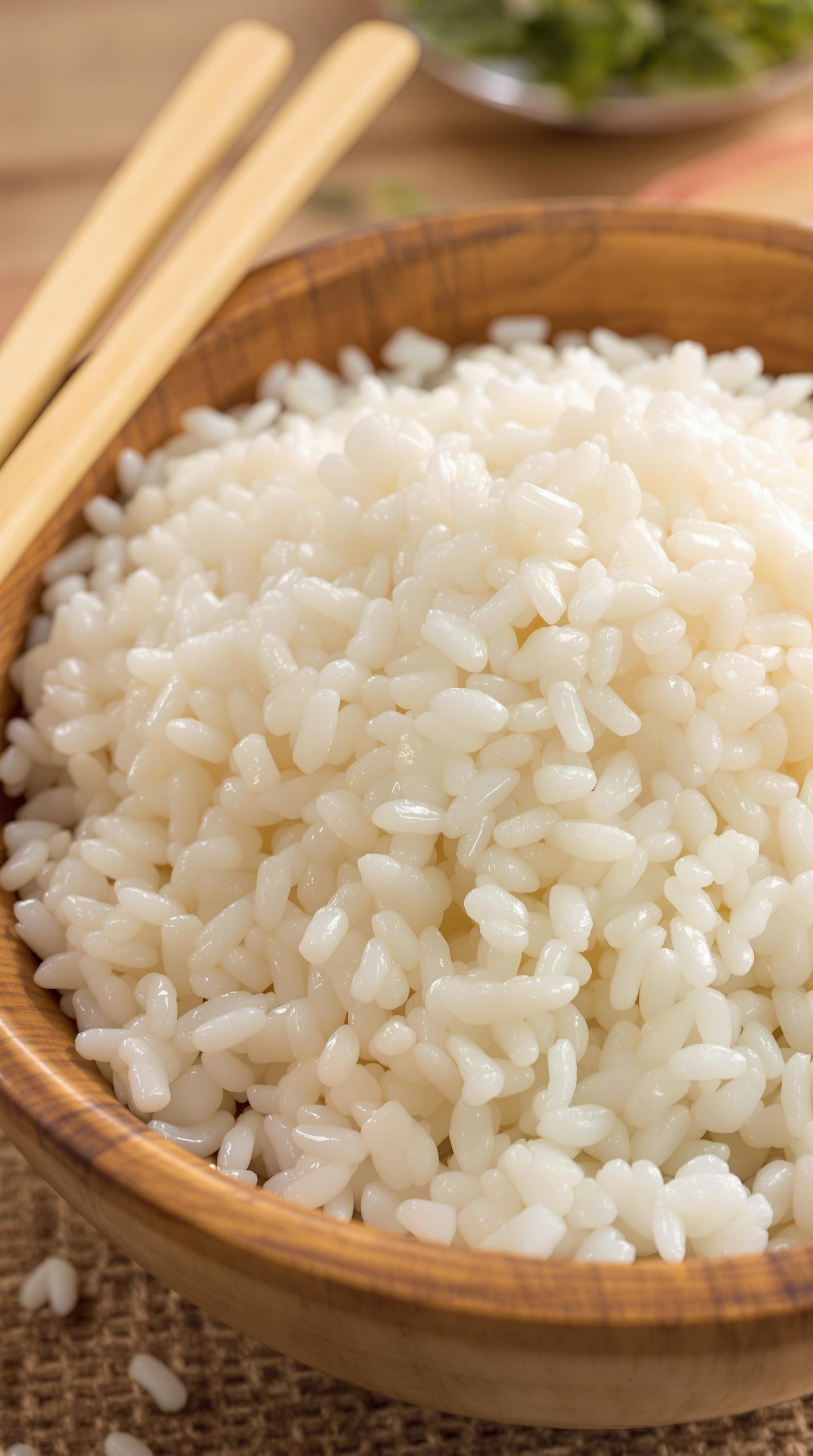
Making sushi rice is all about technique, not complexity—and trust me, you’ll feel like a sushi master once you nail this process.
Start by thoroughly rinsing 3 cups of medium or short-grain rice about five times until the water runs clear. This washing step isn’t just tradition; it removes excess starch that would make your rice too gummy instead of perfectly sticky.
Once rinsed, transfer your rice to a rice cooker (the easiest method for consistent results) and add the appropriate amount of water according to your cooker’s instructions, but here’s the pro tip—reduce that water amount by approximately 2 ounces. This slight adjustment creates the firmer texture that holds up beautifully when making rolls.
After the cooking cycle completes, patience becomes your secret ingredient. Let the rice rest, undisturbed with the lid on, for 10-20 minutes. This resting period allows the rice grains to finish absorbing moisture and firm up just enough.
Now comes the transformation from ordinary rice to proper sushi rice. Spread the hot rice into a large, shallow pan or bowl—a traditional wooden hangiri is ideal, but any wide, non-metallic container works. For the best heat retention while preparing your seasoned rice, many professional chefs prefer using a Le Creuset Dutch oven with its excellent temperature control properties.
While the rice is still very hot, drizzle 3 ounces of mitzukan sushi rice seasoning evenly over the surface. Using a cutting and folding motion (rather than stirring, which would crush the grains), gently mix the seasoning throughout the rice.
Can you see how each grain becomes glossy and distinct? Spread the seasoned rice back out to cool for just 10 minutes, allowing those flavors to fully absorb while the temperature drops just enough for handling.
The result? Rice that’s sticky enough to form perfect rolls but maintains distinct grains with a subtle tang and sweetness that elevates whatever fillings you choose.
For actually forming and cutting your sushi rolls, investing in a quality sushi making knife set will make a significant difference in the professional appearance of your final presentation.
Perfect Sushi Rice Substitutions and Variations
What if you don’t have traditional Japanese ingredients on hand or want to customize your sushi rice to fit dietary needs?
I’ve got you covered with simple swaps that won’t compromise flavor.
For rice vinegar substitutes, try apple cider vinegar mixed with a pinch of sugar, or white wine vinegar with honey.
Brown rice can replace white for extra fiber, though you’ll need slightly more water. Quinoa works for grain-free diets, creating a nuttier base.
And for lower sodium versions, try reducing the seasoning by half, adding a squeeze of lemon for brightness.
What to Serve with Perfect Sushi Rice
Now that you’ve mastered perfect sushi rice, your culinary canvas is ready for delicious toppings and pairings.
I love how versatile sushi rice can be! Try topping it with slices of fresh salmon, tuna, or avocado for nigiri-style treats. Or roll it up with cucumber, crab, and carrots for homemade maki.
Don’t forget the sides—pickled ginger cleanses the palate between bites, while wasabi adds that distinctive heat. A small bowl of miso soup makes the perfect starter, and edamame offers a protein-rich nibble.
Can’t decide? Create a DIY sushi bar and let everyone build their own.
Final Thoughts
Although creating sushi rice might seem intimidating at first, I’ve found that practice truly makes perfect.
The key is patience—from rinsing the rice thoroughly to letting it rest after cooking. Don’t rush the process.
When you nail that perfect balance of sticky yet firm grains, subtly seasoned with that tangy-sweet vinegar mix, it’s truly satisfying.
Just like with folding wontons properly, the technique becomes second nature with repetition and careful attention to detail.
Remember that good technique applies to all cooking – for instance, knowing when to stop cooking delicate seafood prevents it from becoming tough and rubbery, just as with perfectly cooked sushi rice.
